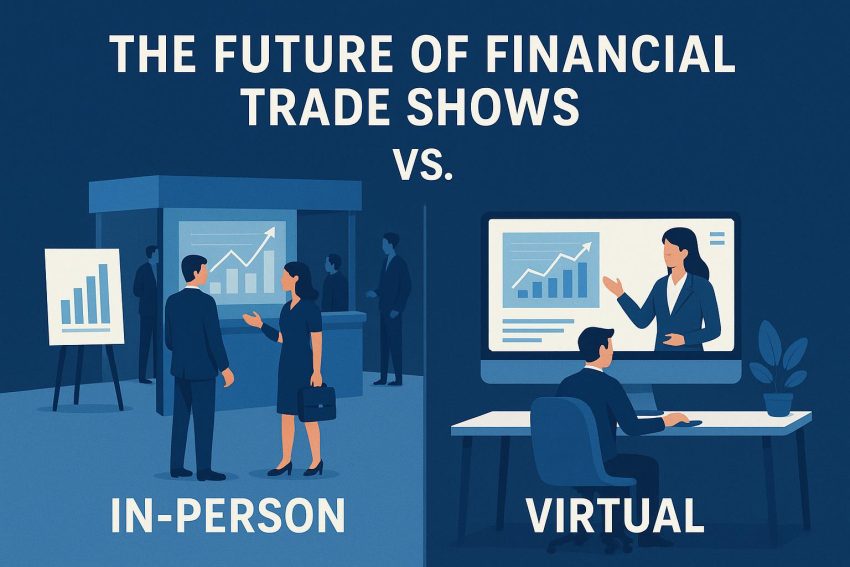The Changing Landscape of Financial Trade Shows
The financial industry has witnessed significant shifts in how trade shows are conducted, particularly in the era defined by rapid technological advancements and global events such as the COVID-19 pandemic. These changes have spurred traditional in-person trade shows to evolve, giving rise to virtual alternatives. This article explores the viability and future of in-person versus virtual financial trade shows.
In-Person Financial Trade Shows
In-person financial trade shows have long been a staple for industry professionals. These events provide a platform for networking, exchanging ideas, and showcasing new products or services. A significant advantage of the in-person format is the ability to foster direct human connections, which can lead to more robust business relationships.
Furthermore, these events bring together diverse professionals, allowing for the exchange of insights and best practices from around the globe. The serendipity of unexpected meetings and spontaneous discussions is a hallmark of in-person shows, offering unique opportunities for collaboration and partnership. Exhibitors also benefit from the ability to present their offerings in real life, an experience virtual environments often cannot replicate due to the tangible nature required for certain demonstrations.
However, in-person trade shows carry a variety of challenges. These include substantial costs associated with travel, accommodations, and event logistics. Additionally, not all interested parties can overcome these hurdles, making accessibility a barrier where only those with the means and time can participate. This exclusivity can limit the diversity of ideas and solutions presented at these events.
Virtual Financial Trade Shows
In contrast, virtual financial trade shows offer a flexible and often more cost-effective alternative. They enable participants from across the globe to engage without the burdensome costs and logistics associated with travel. Virtual platforms can host a greater number of attendees, boasting features such as webinars, live chats, and digital exhibitor booths that allow for interactive participation.
One noteworthy advantage of virtual trade shows is the ability to analyze data efficiently. Organizers can monitor user engagement, track attendance, and assess other metrics to refine future events. Moreover, the reduced need for physical travel and materials contributes to a smaller carbon footprint, aligning with global sustainability efforts.
However, there are challenges unique to virtual trade shows as well. The level of engagement often found in face-to-face interactions is challenging to replicate digitally. Technical issues, such as access to reliable internet connectivity and ensuring compatibility across various devices, can impede participation and the overall attendee experience.
Additionally, virtual environments may struggle to encapsulate the atmosphere and energy of an in-person event. Maintaining participant engagement becomes crucial, with organizers needing to innovate constantly to keep the digital audience captivated and interactive.
Hybrid Approach
The hybrid model has gained traction among many financial trade shows, combining both in-person and virtual elements. This approach aims to capitalize on the strengths of both formats, delivering a comprehensive experience tailored to different participant needs. Those who can travel benefit from direct physical interaction, while virtual attendees gain convenient access to sessions and networking opportunities.
The hybrid model offers versatility, enabling organizers to cater to diverse preferences and circumstances. For this approach to succeed, organizers must invest in robust technological infrastructure and meticulous planning to ensure seamless execution. This dual format has the potential to expand the reach and inclusivity of trade shows, accommodating both traditional and modern attendee expectations.
Considerations for the Future
As the global environment continues to evolve, organizers and participants of financial trade shows must weigh their options carefully. When planning these events, it is crucial to consider multiple factors: assessing the target audience’s needs, evaluating budget constraints, and determining the overall goals of the event.
The trend towards digitalization is expected to persist, with many experts foreseeing a transformation in how these shows will manifest. In-person connections remain invaluable, and while the digital shift presents new opportunities for inclusivity and efficiency, the ultimate success will hinge on adaptability. Trade show organizers must find ways to integrate innovative solutions that meet emerging trends and match participant expectations.
For more information on current trends and insights into the financial industry, industry professionals can explore resources offered by leading organizations such as Finextra or the Financial Planning Association. These platforms offer access to industry news, research, and thought leadership, equipping professionals with information necessary to navigate the future landscape of financial trade shows.
This article was last updated on: August 28, 2025
